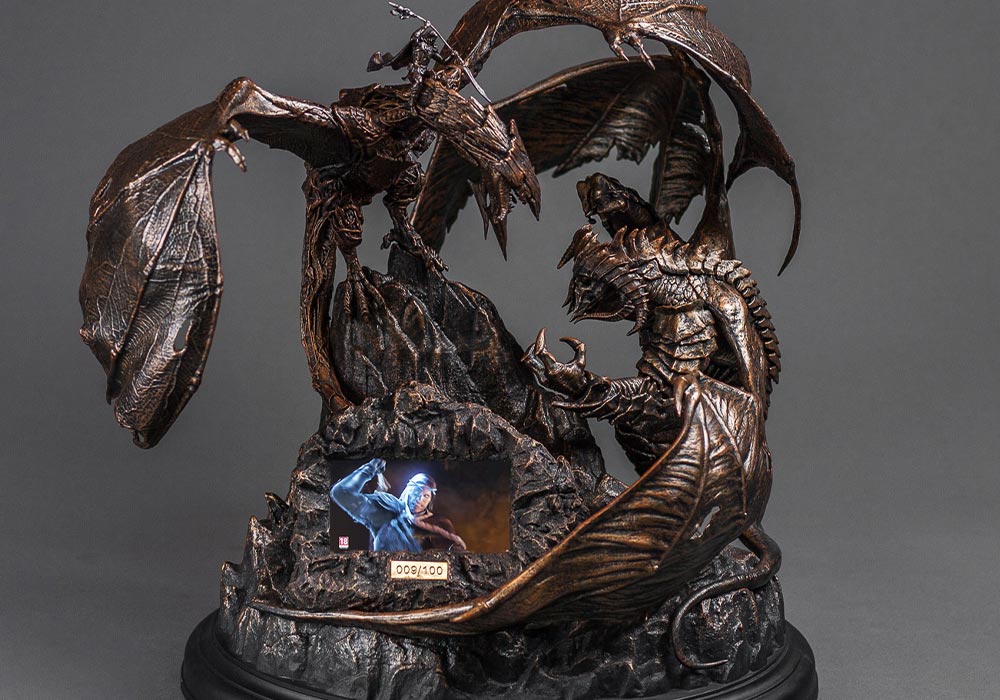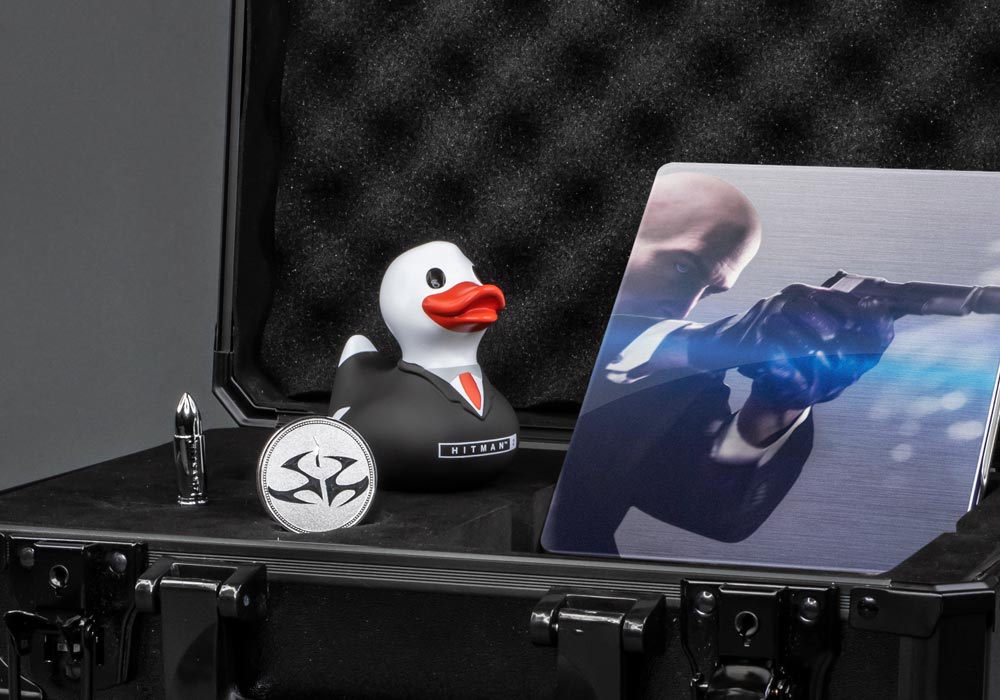MARCH 04, 2020
Amongst our favourite projects are creating collector’s editions for our clients and their entertainment products.
We’ve created some incredibly detailed editions for Ubisoft’s Assassin’s Creed series, for instance. The collector’s editions we’ve produced for Origins feature meticulous limited-edition figurines of Bayek and Senu leaping into action, alongside other amazing goodies including resin amulets, exclusive artwork and digital downloads.
We’ve partnered with other AAA publishers, too. Our Dragon Ball FighterZ collector’s edition included an angry 18cm-tall Goku ascending to Super Saiyan; a 12-inch Tar-Goroth Balrog and Carnan Drake fight to the death in our Shadow of War limited edition, and Agent 47’s rubber duck makes a cheeky appearance in our Hitman 2 collector’s edition.
Our work on the Divinity: Original Sin II collector’s edition helped the Kickstarter-backed title stand apart from its AAA competitors. Our large-scale, detailed and interchangeable Fane figurine was delivered on a low run and within the client’s budget; the end result was a premium product that sold out in just under 26 hours, and delighted fans of the series.
Click here to see more of our amazing, exclusive collector’s editions!
As fun as they are to create and as impressive as the end results can look, though, there are practical business conditions to consider before commissioning a collector’s edition.
As you may expect, a lot goes into creating a collector’s edition; time, materials, planning, stock, delivery, marketing and much more besides.
So, what things should you consider to help increase the success of your collector’s edition to make it commercially viable?
One of the biggest worries we come across when working with clients revolves around stock, and what to order above the minimum order quantity (MOQ).
Order too many products and there’s the chance of unsold units taking up warehouse space. Too little, and there’s the possibility of delayed orders, upsetting your core fans who have committed to investing in something special. So, what’s the best way to approach a collector’s edition?
The business case for a collector’s edition
Our advice is to work backwards as a starting point. The entire ‘collector’s edition process’ takes approximately a year, so there’s plenty of time at the start to prepare a timeline and creative strategy to maximise its success.
The earlier you execute your creative strategy, the better. High-definition unboxing shots featuring every component of the box clearly laid out are essential to make mouths water, and boost pre-orders. These shots can also be circulated around relevant media and influencers, too, to complement your social strategy.
And you only need one unit to make an impact. Our Assassin’s Creed: Origins collector’s edition is a great indicator of that; the ‘Dawn of the Creed’ edition made headlines in both the gaming media and mainstream press from one image for its sheer ambition, creating a natural ripple of interest on social media from influencers, YouTubers filming unboxing videos, Assassin’s Creed fans, and many others.
Another benefit is that, from that attention, more people naturally hear about the game overall, making it a huge ally in your overall acquisition strategy.
It’s wise not to focus your expectations for ROI simply on the amount of units you can sell. That media exposure is also crucial, and it’s hard to measure word of mouth. We therefore think that the more collector’s editions you manufacture, the better the reach and wider ROI.
It makes sense to focus on a low-run plan to help you break even to start with, before accelerating the strategy. A pre-order strategy can help manage the workload and fulfil your commitments as the demand increases, and you can see exactly how many units above the MOQ you’ll need to order.
It’s also worth focusing on the ‘limited’ aspect of a collector’s edition, too. Selling out makes collector’s editions that much more desirable to consumers, especially those that carry a certificate of authenticity. Will they be lucky enough to own a piece of gaming history themselves?
Low-run and high-run plans, and the work needed on creating the collector’s edition proper, goes all the way up to three weeks before delivery. As we say, working backwards and considering prices at retail, collecting orders and gauging demand through pre-order strategies, target margins and other commercial commitments is usually the best place to start.
Because the end result isn’t just something that looks nice on the shelf. Collector’s editions also collect a lot of column inches due to the sheer scale of their ambition, and get talked about and shared widely amongst the market you’re most looking to make an impression on.
Aligned with a strong pre-order strategy, they can help boost sales of a product as well as the general fiscal benefits of a successful campaign.
Most importantly, though, nothing beats the excitement they give a fan when they receive and unbox one, making them the proud owner of something truly special and unique that makes them the envy of their friends.
Your brand has given them that experience, and they’ll always remember you for it.

